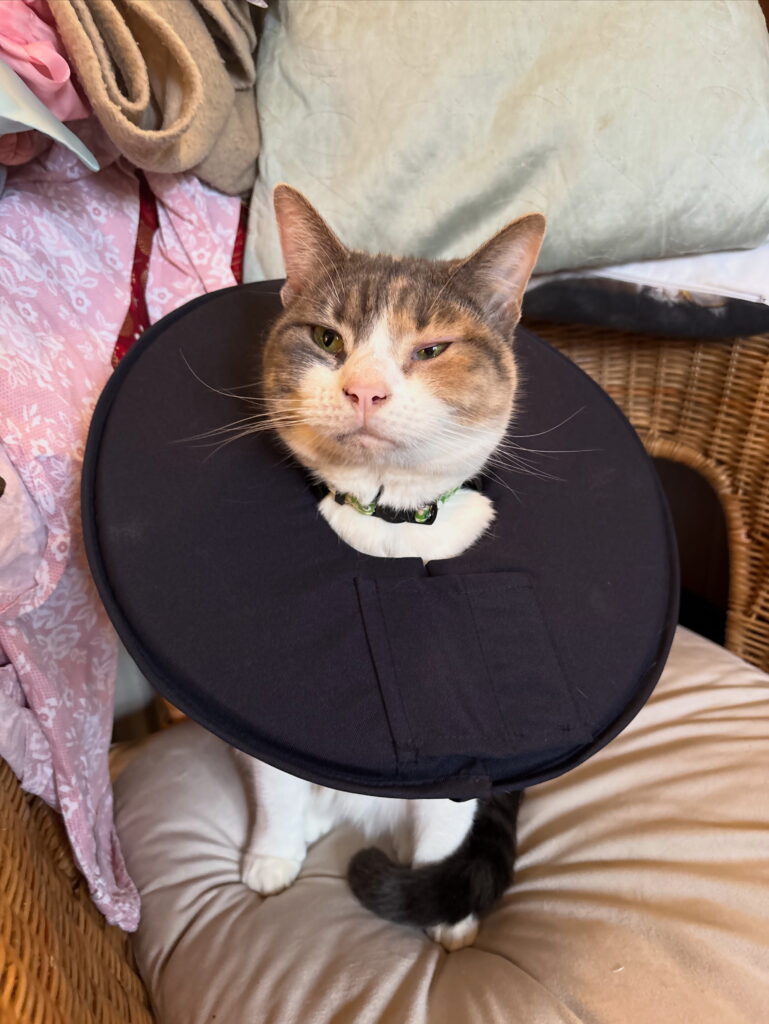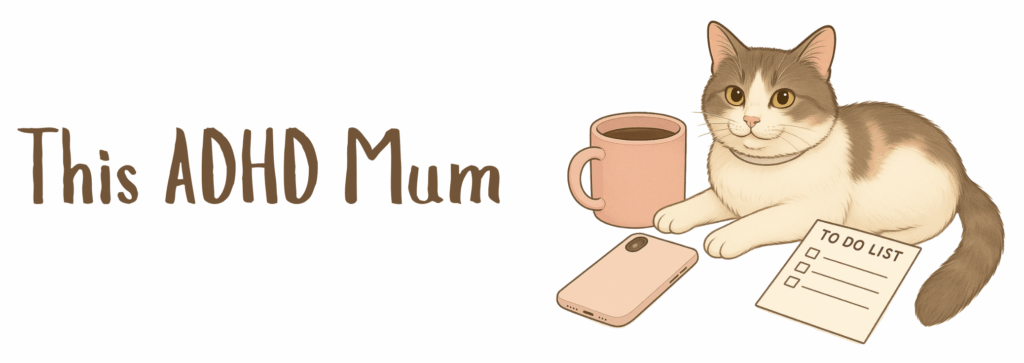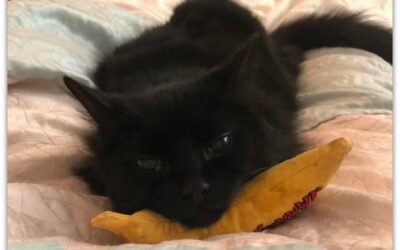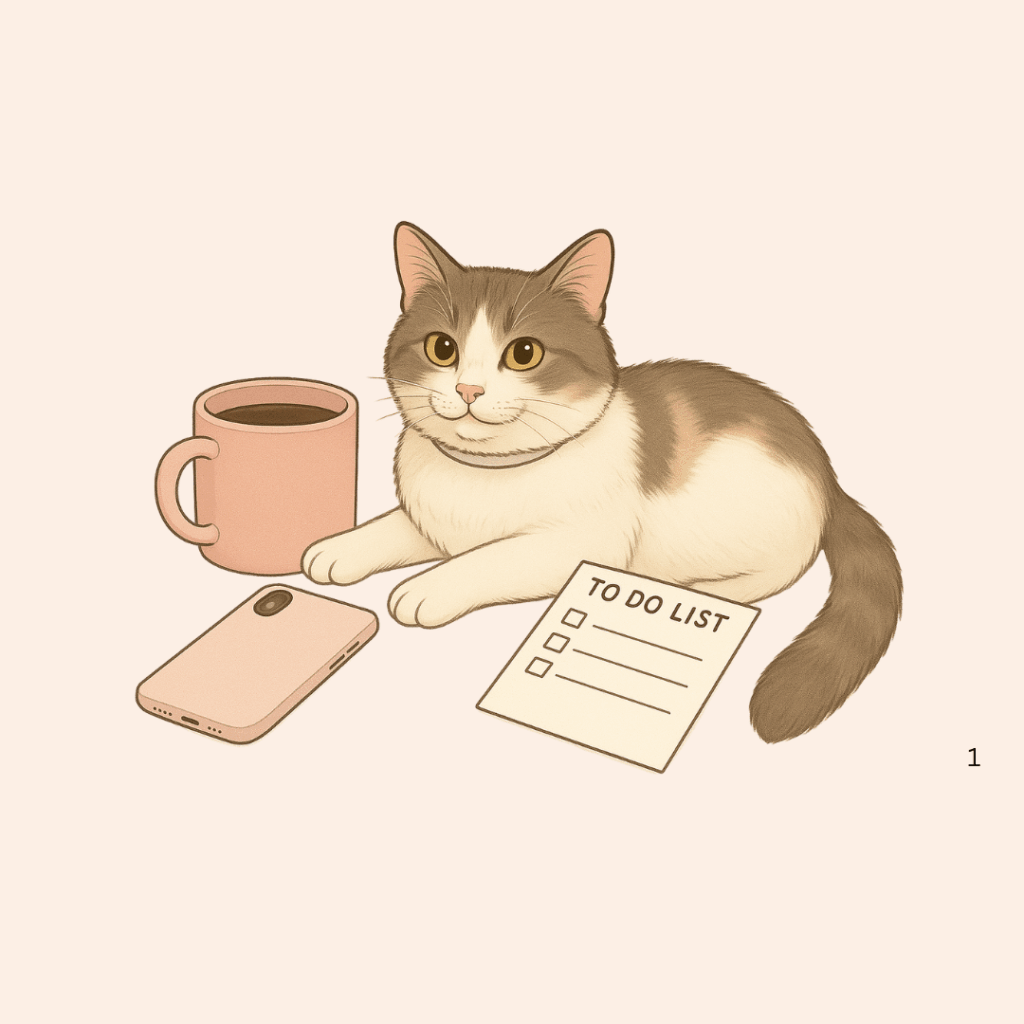If you’ve ever taken your cat to the vet and come home with them sporting the dreaded “cone of shame” (or its softer, slightly less embarrassing cousin, the donut collar), you’ll know exactly what I mean when I say… the drama. The sulks. The sheer Olympic-level guilt trips.

Cats are proud little creatures. They like to move with stealth, squeeze into impossibly tiny spaces, and most importantly, look good doing it. So when they end up with a lampshade on their head, well, let’s just say it’s not their idea of a good time.
But sometimes, it’s unavoidable. Cones and collars are there for a reason – and despite the tragic looks your cat will give you, they really are for their own good.
Why Cats Wear Collars After the Vet?
So why has your fluffy overlord ended up with a cone or a donut collar? Here are the main reasons:
- To stop licking or chewing wounds – Cats are quick healers, but only if they leave their wounds alone. Licking can slow healing, reopen stitches, and even cause infection.
- After surgery – Whether it’s a spay/neuter, lump removal, or something more complex, collars are there to protect the stitches until they’re fully healed.
- Skin conditions – If your cat has a sore patch or itchy skin, a collar prevents them from scratching it raw.
- Eye or ear issues – Sometimes cones are used to stop cats pawing at sore eyes or ears while they recover.
It might feel a bit mean, but cones really are just short-term protection. Think of them as the cat equivalent of a plaster cast or a bandage – not pretty, not fun, but very necessary.
The Struggles Are Real
Now, anyone who’s ever seen a cat take their first steps in a cone will know it’s not just a practical tool – it’s a full-blown comedy show. They’ll reverse into walls. They’ll misjudge doorways. They’ll flop dramatically on the floor as though their life is ruined.
And then there’s the noise. That constant clunk-clunk-clunk as they bash into furniture, table legs, and anything else in their path.
The good news? Most cats adjust within a day or two. But you can absolutely make life easier for them (and for yourself) while they’re stuck wearing it.
Here are some practical (and slightly humorous) tips to help your cat cope with their temporary accessory:
1. Fine Dining Upgrade
Trying to eat or drink with a cone on is like you trying to eat a burger while wearing a crash helmet. Not easy.
Solution: raise their food and water bowls up on a little stand so they don’t have to awkwardly shove their head at the floor. A sturdy box, a couple of books, or even proper raised bowls will do the trick.
2. Go Big or Go Hungry
Small dishes just won’t cut it. Cones make it harder for cats to angle their faces, and suddenly that dainty little saucer looks like an impossible challenge.
Solution: swap to wider, shallower bowls so your cat can actually get their face in without smacking plastic.
3. Bribery (a.k.a. Extra Cuddles)
Your cat is going to look at you like you’ve personally betrayed them. The best remedy? Affection. Extra strokes, fuss, and playtime will help them feel a bit less hard done by. (Bonus: guilt-cuddles are good for your own conscience too.)
4. Clear the Runway
Cats in cones have the grace of a shopping trolley with a wonky wheel. They’ll knock into chair legs, wedge themselves into gaps, and bulldoze through anything in their way.
Solution: move obstacles where you can. Block off narrow gaps they might get stuck in. Basically, kitten-proof your house all over again – just with a lampshade in mind.
It’s also helpful to give them small breaks from the cone, particularly if they have to wear it for a while, or a few days. This allows them to groom themselves, although you do need to watch them closely to make sure they don’t attack the area of concern that’s healing during these breaks.
Making sure the cone or collar fits and is as comfortable as possible is also very important. Buy or get a good quality one from your vet or local pet supply shop and make sure it’s not too tight or too loose and fitted according to instructions. Your vet can make sure for you. Keep it clean and check it for snags or loose bits that could irritate your cat. Hard plastic cones are cheap but not comfortable at all, we tend to opt for a soft but large cone that means our cats can lie down and move about more easily. Make sure it isn’t irritating their neck or skin as well.
The cone of shame isn’t fun, but it does serve a purpose and helps with the healing process even if it does make your cat feel very sorry for themselves and potentially very grumpy.
If you have any cone of shame tips for us we’ve missed, please do feel free to share them in the comments, Tabitha, our cat, won’t appreciate them much, but we will…





 This ADHD Mum was born when I hung up my parenting blogger hat and decided to share life as I see it through the lens of someone with late diagnosed ADHD. You will find ADHD & mental health content, life as I ride the menopause rollercoaster, food, because food is life, and because we love them, all things cat.
You can reach out to me at info@thisadhdmum.com or find us on social media
This ADHD Mum was born when I hung up my parenting blogger hat and decided to share life as I see it through the lens of someone with late diagnosed ADHD. You will find ADHD & mental health content, life as I ride the menopause rollercoaster, food, because food is life, and because we love them, all things cat.
You can reach out to me at info@thisadhdmum.com or find us on social media 